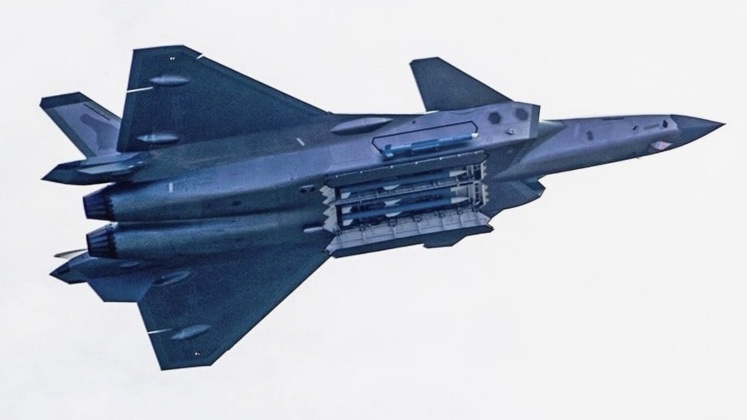News
First Ever Missile Launch Footage Shows Why China’s J-20 Fighter is Unrivalled in Visual Range Combat
Marking the 74th anniversary of the founding of the Chinese People’s Liberation Army (PLA) Air Force the Ministry of National Defence released the first ever footage showing a live fire missile launch by a J-20 fifth generation fighter. The release follows years of speculation regarding the aircraft’s launch sequence since the class made its first flight in January 2011. The missile fired was an infrared guided PL-10 designed for visual range combat, of which each fighter carries two one in each of its two side missile bays, while a much larger ventral bay carries either PL-15 radar guided air to air missiles or air to surface ordinance. Footage showing the launch of a PL-10 missile is significant since the J-20 makes use of an entirely unique retractable side launch rail for the missiles, with weapons integration tests for the launch system first reported to have been underway in early 2013. The system deploys missiles outside of the J-20’s weapons bays with bay doors closed, allowing pilots to launch far more quickly in combat while avoiding the significant reductions to stealth capabilities and aerodynamic profiles that come from opening bays during combat as other stealth aircraft do.

The PL-10 itself is considered a close contender for the title of most capable visual range air to air missile in service worldwide, and makes use of thrust vector controls and a gimbaled imaging infrared seeker to facilitate high off boresight targeting at angles exceeding 90 degrees. The missile’s strong advantages have been widely acknowledged by Western sources, with the British Royal United Services Institute observing that the missile had a “superior kinematic performance to the American AIM-9X Sidewinder.” With a range considered very long for an infrared guided missile, the PL-10 is also capable of targeting at lower beyond-visual ranges. The missile’s capabilities are particularly potent when paired not only with the J-20’s unique launch system, but also with the fighter’s own avionics and extreme manoeuvrability. Footage from late 2022 showed J-20s demonstrating an increasingly impressive low speed flight performance, with the integration of thrust vectoring WS-15 engines expected from late 2024 expected to make the fighter class a close contender for the title of the world’s most manoeuvrable. The WS-15 was announced in March to have entered serial production, and first flew in twin configuration on a J-20 in late June.

The J-20’s avionics further its visual range combat advantage, with its distributed aperture systems being a unique feature otherwise seen only on the American F-35 which among other functions allows pilots to ‘see’ through sensors across the airframe using their helmets. This makes the fighter effectively transparent from the inside. The system also allows pilots to detect and track missile launches including launch point detection and the cueing of countermeasures, can cue air to air missiles when enemy aircraft are detected, and improves night vision capabilities. As China’s prime air superiority fighter rapid improvements to the J-20’s capabilities since the class entered service in 2017 has led growing numbers of analysts to consider in the world’s most capable aircraft of its kind, with its ageing American rival the F-22 having ceased production in 2011 and using avionics which are today considered increasingly obsolete. The F-22’s visual range combat capabilities are considered among the poorest in the world due to a lack of helmet mounted sights key to facilitating high off boresight missile targeting, while its lack of infrared sensors, distributed aperture systems or even modern data links seriously limit situational awareness. The much lighter F-35, although on par with the J-20 in terms of avionics, suffers from wide ranging performance issues, less than half the range, and carries much smaller sensors and a much smaller weapons payload while being highly limited in its flight performance due to a low thrust/weight ratio. Visual range combat capabilities are thus only one of multiple areas of the J-20’s performance where it has gained very clear performance advantages over rival fighters fielded overseas.












